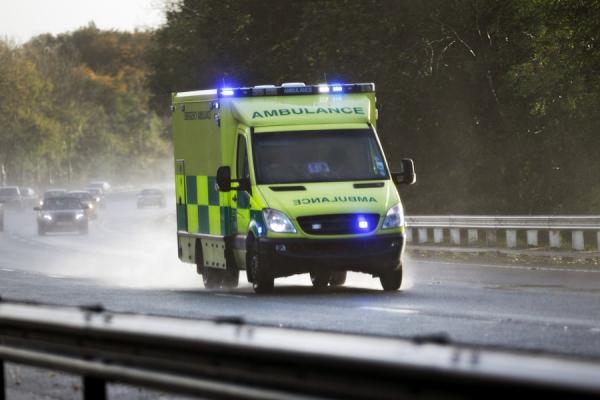
פאַרגלייַך פון פּרעהאָספּיטאַל וואָג פֿאַר פּרידיקטינג גרויס אַנטיריער שיף אָקקלוסיאָן אין די אַמבולאַנס באַשטעטיקן
Prehospital scales and their usefulness in ambulances, a study published in Jama starts with this question: what are performance and feasibility rates of prediction scales for large anterior vessel occlusion when validated externally and compared head to head in the emergency medical services setting?
In this study of patients who received acute stroke codes, 7 prehospital prediction scales are analysed
In this cohort study of 2007 patients who received acute stroke codes, 7 prediction scales showed good accuracy scores, high specificity, and low sensitivity, statistically favoring the Los Angeles Motor Scale and the Rapid Arterial Occlusion Evaluation scale.
Feasibility rates favored the Prehospital Acute Stroke Severity scale.
The present results suggest that small but statistically significant differences in accuracies appear to be clinically meaningful in larger populations for reducing treatment delays, with subsequent improved clinical outcomes, and that feasibility should be considered before implementing a scale.
DEFIBRILLATORS, באַזוכן די ZOLL BOOTH ביי עמערגענסי עקספּאָ
The importance of pre-hospital scales in ambulances
The efficacy of endovascular thrombectomy (EVT) for symptomatic large anterior vessel occlusion (sLAVO) sharply decreases with time.
Because EVT is restricted to comprehensive stroke centers, prehospital טריאַגע of patients with acute stroke codes for sLAVO is crucial, and although several prediction scales are already in use, external validation, head-to-head comparison, and feasibility data are lacking.
Objective: To conduct external validation and head-to-head comparisons of 7 sLAVO prediction scales in the emergency medical service (EMS) setting and to assess scale feasibility by EMS paramedics.
This prospective cohort study was conducted between July 2018 and October 2019 in a large urban center in the Netherlands with a population of approximately 2 million people and included 2 EMSs, 3 comprehensive stroke centers, and 4 primary stroke centers.
Participants were consecutive patients aged 18 years or older for whom an EMS-initiated acute stroke code was activated.
Of 2812 acute stroke codes, 805 (28.6%) were excluded, because no application was used or no clinical data were available, leaving 2007 patients included in the analyses.
The prehospital prediction scales analysed
Applications with clinical observations filled in by EMS paramedics for each acute stroke code enabling reconstruction of the following 7 prediction scales: Los Angeles Motor Scale (LAMS); Rapid Arterial Occlusion Evaluation (RACE); Cincinnati Stroke Triage Assessment Tool; Prehospital Acute Stroke Severity (PASS); gaze-face-arm-speech-time; Field Assessment Stroke Triage for Emergency Destination; and gaze, facial asymmetry, level of consciousness, extinction/inattention.
Planned primary and secondary outcomes were sLAVO and feasibility rates (ie, the proportion of acute stroke codes for which the prehospital scale could be reconstructed).
Predictive performance measures included accuracy, sensitivity, specificity, the Youden index, and predictive values.
Of 2007 patients who received acute stroke codes (mean [SD] age, 71.1 [14.9] years; 1021 [50.9%] male), 158 (7.9%) had sLAVO.
Accuracy of the scales ranged from 0.79 to 0.89, with LAMS and RACE scales yielding the highest scores.
Sensitivity of the scales ranged from 38% to 62%, and specificity from 80% to 93%.
Scale feasibility rates ranged from 78% to 88%, with the highest rate for the PASS scale.
This study found that all 7 prediction scales had good accuracy, high specificity, and low sensitivity, with LAMS and RACE being the highest scoring scales.
Feasibility rates ranged between 78% and 88% and should be taken into account before implementing a scale.
jamaneurology_nguyen_2020_oi_200086_1612851442.47901לייענען אויך:
The Importance Of Calling Your Local Or National Emergency Number In Case Of Suspected Stroke
סערטאַפאַקיישאַן פון סטראָוק זאָרגן פֿאַר די מעמאָריאַל האָספּיטאַל פון פרעעמאָנט
העכער ריזיקירן פון מאַך פֿאַר וועטעראַנס מיט גייַסטיק געזונט דיסאָרדערס
מאַך איז אַ פּראָבלעם פֿאַר מענטשן מיט לאַנג אַרבעט שעה יבעררוק
סינסאַנאַטי פּרעהאָספּיטאַל סטראָוק סקאַלע. זיין ראָלע אין עמערגענסי דעפּאַרטמענט



